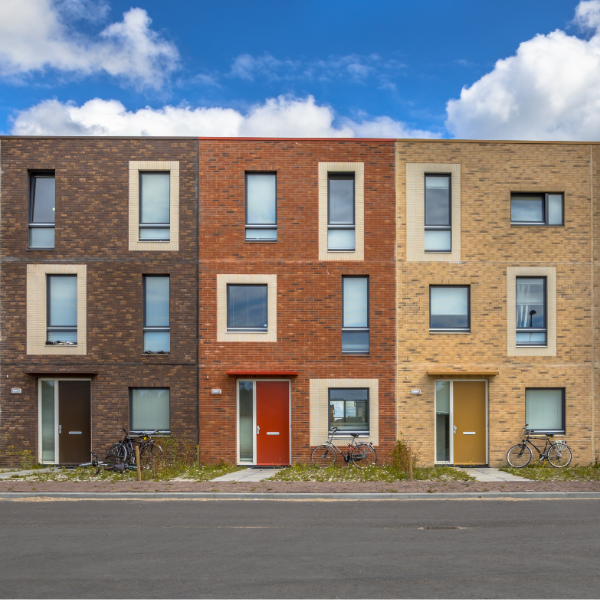Last Updated: January 2024
Cost segregation has been in the U.S tax code for more than 60 years, but recent rulings and specialized professionals have brought this real estate tax strategy into greater awareness. Rental property cost segregation involves breaking down the property into its various components, so that some of which can be depreciated over a shorter life span, as compared to standard longer term depreciation timelines. While cost segregation can offer significant tax benefits, it’s important for real estate professionals and investors to work with a skilled tax professional to accurately comply with IRS regulations.
What is a Cost Segregation Study?


Cost segregation is a tax planning strategy used by real estate investors that accelerates the depreciation deductions a taxpayer can claim for certain property assets. A cost segregation study involves hiring a qualified professional to properly identify and separate personal property assets, which can be depreciated over a shorter time frame (usually 5, 7, or 15 years), from real property assets that are depreciated over a longer period (typically 27.5 years for residential property, and 39 years for non-residential). This results in higher depreciation expense in the early years of property ownership, reducing taxable income, and thus lowering the tax liability.
How to Do a Cost Segregation Study? (Actionable Steps)
A cost segregation study can be very beneficial when done correctly. Much like a 1031 exchange, the process requires specialized knowledge, making it advisable to engage with a professional experienced in conducting these studies. Here’s an overview of the steps:
- Hire a Cost Segregation Specialist: Start by finding an expert, such as a certified public accountant (CPA) or a construction engineer with experience in cost segregation. They’ll have the necessary knowledge of tax law and construction to accurately perform the study.
- Property Inspection: The specialist will conduct a thorough site visit to inspect the property and identify assets that qualify for accelerated depreciation. This can include elements like carpeting, appliances, specialized electrical or plumbing installations, and even landscaping elements.
- Detailed Analysis: Using construction cost estimating techniques, the specialist will segregate the cost of the property into different asset categories: personal property, land improvements, and building (real property).
- Report Preparation: The specialist will prepare a detailed report itemizing the segregated assets, the methodology used, and the legal justifications. This report is critical for IRS documentation and future reference in case of an audit.
- File Taxes Accordingly: Use the report’s findings when preparing your tax return, or provide it to your tax preparer. The study’s results should show the amount of depreciation you can claim each year for the different asset categories.
Cost Segregation Example
Let’s consider an example where a real estate investor purchases a student housing rental property for $1,000,000. Without a cost segregation study, the IRS would classify the entire property as real property, and it would be depreciated over 27.5 years. This means the investor could claim approximately $36,364 ($1,000,000 / 27.5) in depreciation expense annually.
However, with a cost segregation study, certain components of the property could be classified as personal property or land improvements and depreciated over shorter time periods. Suppose a cost segregation professional identified $200,000 worth of assets that could be classified as personal property (e.g., refrigerators, carpeting, window treatments) and depreciated over 5 years, and another $100,000 that could be classified as land improvements (e.g., landscaping, fencing) depreciated over 15 years. Now, instead of a single depreciation schedule, the investor has three:


- Personal Property: $200,000 depreciated over 5 years = approximately $40,000 per year
- Land Improvements: $100,000 depreciated over 15 years = approximately $6,667 per year
- The remaining “real property”: $700,000 depreciated over 27.5 years = approximately $25,455 per year
So in the first five years, the investor is now claiming approximately $72,122 ($40,000 + $6,667 + $25,455) in depreciation annually instead of just $36,364, significantly reducing their taxable income for those years.
Cost Segregation Pros and Cons
Cost segregation can be a powerful tool for real estate investors looking to get the most out of their depreciation deductions, but like any investment strategy, it has its advantages and disadvantages. Understanding these pros and cons can help investors make informed decisions about whether a cost segregation study is suitable for their situation.
| Cost Segregation Pros | Cost Segregation Cons |
|---|---|
| Accelerated Depreciation: While it cannot reduce annual property taxes, cost segregation can significantly accelerate depreciation deductions, reducing current-year tax liability. | Cost of Study: Conducting a cost segregation study can be expensive, as it often requires the expertise of a specialist such as a CPA or engineer. |
| Improved Cash Flow: The tax savings from increased depreciation can enhance an investor’s cash flow, which can be reinvested to grow their real estate portfolio. | Increased Audit Risk: Cost segregation studies can potentially increase the risk of an IRS audit, as the IRS may scrutinize the depreciation categories more closely. |
| Catch-Up Depreciation: Investors can claim “catch-up” depreciation in the first year for properties owned for several years without filing an amended tax return. | Recapture Tax: When a rental property is sold, the IRS may recapture the depreciation at a 25% rate, which could potentially lead to higher taxes upon sale. |
The #1 Rental Property Newsletter
Once a month, we send out an exclusive Rental Property Market Update with top stories, current mortgage rates, building products, and more. No spam and unsubscribe anytime.


Rental Property Cost Segregation FAQ
Is Cost Segregation Worth It?
Whether a cost segregation study is worth it for rental properties largely depends on the specific circumstances of the property and its owner. The strategy can provide significant tax benefits and improved cash flow through accelerated depreciation, which can be especially beneficial for high-income investors seeking immediate tax reductions.
However, the up-front costs of conducting a cost segregation study, the potential increase in audit risk, and the possibility of recapture tax upon selling the rental property should be considered. Furthermore, the depreciation deductions are front-loaded, meaning they’ll be smaller in later years.
Pro Tip


For some property owners, the benefits may outweigh the drawbacks, so it’s important to engage with a tax professional to make an informed decision based on your individual tax situation and long-term investment goals.
How Much Does a Cost Segregation Cost?
The cost of a cost segregation study can vary greatly depending on several factors, including the size and complexity of the property, the firm or professional conducting the study, and the property’s location.
A basic study for a smaller property might start around $4,000 to $5,000, while a more complex or larger property could cost $10,000 to $20,000 or even more. It’s important for property owners to consider the potential tax benefits against these up-front costs. Hiring a knowledgeable tax professional can help assess the potential return on investment of a cost segregation study for your specific circumstances.


Who Can Perform a Cost Segregation Study?
A cost segregation study can be a complex process that requires a deep understanding of both tax law and construction practices. Therefore, it’s typically performed by professionals with experience in these areas. This could include Certified Public Accountants (CPAs), engineers, or firms specializing in cost segregation studies. The IRS suggests that the preparer have knowledge in pertinent areas like construction process, architectural design, engineering, real estate finance, tax law, and property valuation. Importantly, whoever conducts the study should be able to produce a detailed and auditable report, as the IRS may scrutinize the study in the event of an audit. Given the intricacies of a cost segregation study, it’s important to work with a knowledgeable and experienced professional to ensure accuracy and compliance with IRS regulations.
About the Author


Ryan Nelson
I’m an investor, real estate developer, and property manager with hands-on experience in all types of real estate from single family homes up to hundreds of thousands of square feet of commercial real estate. RentalRealEstate is my mission to create the ultimate real estate investor platform for expert resources, reviews and tools. Learn more about my story.
More Rental Real Estate Tax Guides
Disclaimer: The information provided on this website does not, and is not intended to, constitute financial advice. As such, all information, content, and materials available on this site are for general informational purposes only. Please review our Editorial Standards for more info.









